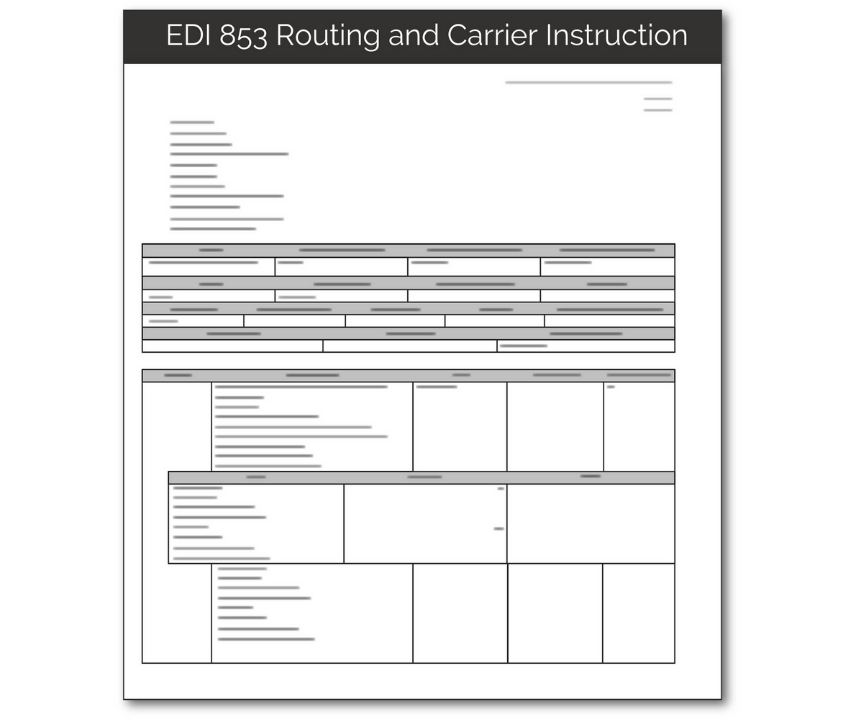EDI 853
Routing and Carrier Instruction

What is an EDI 853?
EDI 853, also known as Routing and Carrier Instruction, is an EDI transaction set used to communicate routing information about a shipment to a customer. This document is usually sent by a shipper or broker to a buyer, letting them know the details of the shipment.
EDI 853 documents follow the x12 format set by the American National Standards Institute (ANSI), a not-for-profit organization that regulates EDI formats in the U.S.
What are the Essential Components of EDI 853?
EDI 853 is a relatively flexible document, since shipment requirements may change based on the customer, ship-to location, and other variables. However, some common information found in EDI 853 include:
- Carrier name and details
- Receiving party contact information
- Specified route, including any stops
- Shipment details, including product quantities and load weight
- Estimated arrival time and date
- Any special carrier instructions, such as special handling requirements


How do I Use EDI 853?
EDI 853 Routing and Carrier Instruction transactions are usually sent from a shipper or broker to the buyer. The document lets the buyer know who is carrying the shipment, the route they are taking, and when they should arrive. Additionally, EDI 853 can let the buyer know about the shipment itself, such as which orders have been consolidated into the load.
EDI 853 does not replace EDI 214 Transportation Carrier Shipment Status Message, which is sent from the carrier to provide real-time updates on a shipment status while it’s in transit. After receiving the 853 transaction set, the buyer will normally respond with an EDI 997 Functional Acknowledgement.
What are the Benefits of EDI 853?
Using EDI 853 can help streamline communications between shippers and buyers, leading to better trade relationships. Because this document can be fully automated, it also helps save time, and prevent errors from manual data input. Plus, buyers can use EDI 853 to plan ahead for arriving shipments, helping to smooth the receiving process.
Like most EDI transactions, EDI 853 also offers a more secure way to communicate with trading partners than a paper, PDF, or email equivalent. EDI providers use a variety of methods to protect these documents, including security protocols like HTTPs, at-rest and in-transit encryption, and user authentication for EDI portals.
